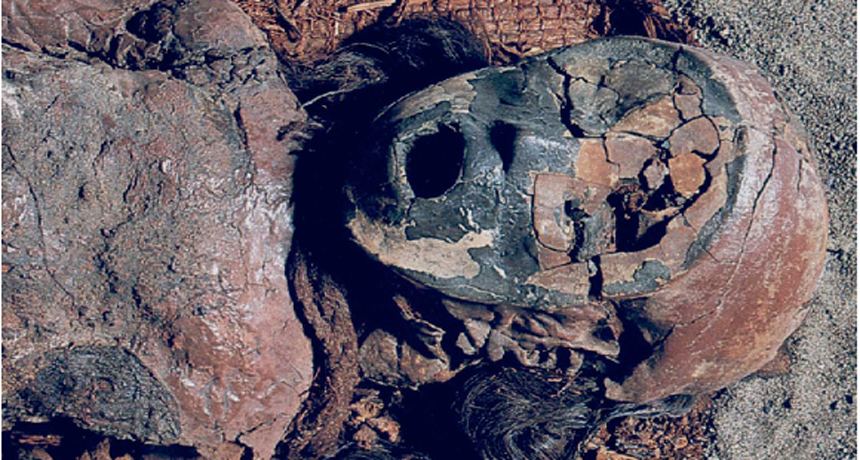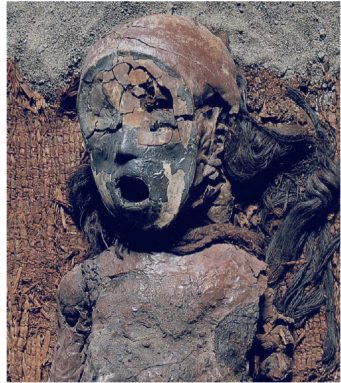The origins of mummies
Scientists speculate on why ancient South Americans started preserving their dead

South America’s Chinchorro people mummified their dead long before the ancient Egyptians. One of the Chinchorro methods used human-hair wigs and red dye made from ochre.
Bernardo Arriaza
Ancient Egyptians are famous for their mummies. But Americans — South Americans — practiced the preservation method first. The Chinchorro people began mummifying their dead about 7,000 years ago. They lived in a desert coastal region of what is now northern Chile and southern Peru. Scientists have now proposed an explanation for how this practice got its start: The Chinchorro were just copying nature.

Seven millennia ago, the Chinchorro population was booming. That growth probably was fueled by plenty of water and food. Climate records show rainfall had been increasing. This would have provided more access to drinking water. Scientists also unearthed fishing tools, including hooks and harpoons, from the same time period. Those suggest the Chinchorro were eating plenty of fish and seafood.
In the new study, scientists propose that the population boom led those ancient people to develop complicated customs. More people would have meant more permanent settlements and more corpses. And that could have led to more frequent sightings of naturally preserved bodies sticking out of shallow graves. At some point, a light bulb could have gone off about a natural way to preserve the dead.
“Environmental changes are usually associated with the collapse of complex societies,” Pablo Marquet told Science News. “But if resources are abundant, environmental change can provide fertile ground for cultural evolution,” meaning change. Marquet, the study’s leader, is an ecologist. He works at Pontificia Universidad Católica de Chile in Santiago. There, he studies the interaction between societies and their environments.
The Chinchorro may have viewed mummification as a religious practice. Other researchers have found that some ancient tribes believed that if a body did not fully decompose, then the person would never fully disappear. So mummification may have seemed as a way to keep the dead among the living.
The Chinchorro mummified their dead for about 2,600 years. The practice appears to have stopped after rainfalls diminished greatly and the tribe’s size fell again.
Although the explanation for mummification by Marquet’s team might be accurate, scientists will need to find more supporting evidence, says Daniel Sandweiss. He’s an anthropologist at the University of Maine in Orono.
“Perhaps someone who encounters Marquet’s article will be inspired to innovate a new way to test his hypothesis, just as encountering natural mummies in the Atacama Desert may have led Chinchorro people to create artificial mummification,” Sandweiss told Science News.
Power Words
mummification Preservation of a dead body to prevent all of the tissues from disappearing due to decay.
anthropology The study of humankind.
arid Dry, as in a desert landscape, where the air and ground lack much moisture.
culture The customs, arts, social institutions and achievements of a particular nation, people or other social group.
population All the inhabitants of a particular region.







